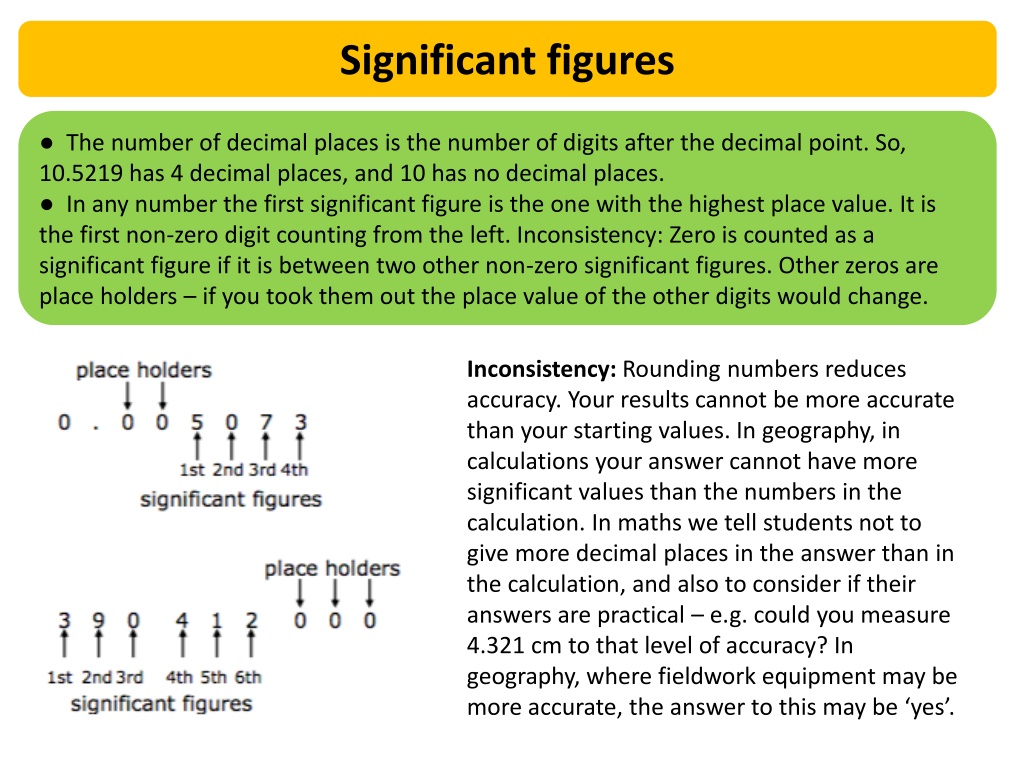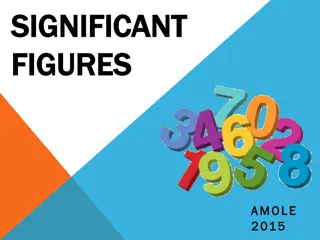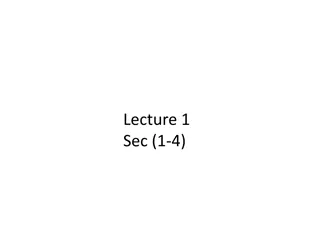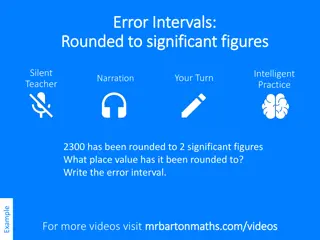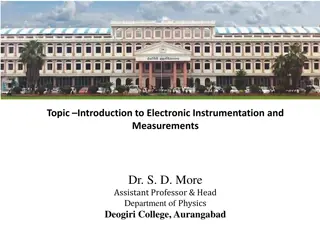Understanding Significant Figures in Mathematics and Science
Significant figures play a crucial role in maintaining accuracy and precision in mathematical and scientific calculations. They help in determining the level of accuracy of measurements and calculations by focusing on the number of significant digits and decimal places. Rounding rules are essential for expressing values to a specific number of significant figures or decimal places. Higher tier math students learn about upper and lower bounds to determine appropriate accuracy levels. Consideration of practicality is also important when deciding on the level of accuracy needed in answers.
Download Presentation

Please find below an Image/Link to download the presentation.
The content on the website is provided AS IS for your information and personal use only. It may not be sold, licensed, or shared on other websites without obtaining consent from the author. Download presentation by click this link. If you encounter any issues during the download, it is possible that the publisher has removed the file from their server.
E N D
Presentation Transcript
Significant figures The number of decimal places is the number of digits after the decimal point. So, 10.5219 has 4 decimal places, and 10 has no decimal places. In any number the first significant figure is the one with the highest place value. It is the first non-zero digit counting from the left. Inconsistency: Zero is counted as a significant figure if it is between two other non-zero significant figures. Other zeros are place holders if you took them out the place value of the other digits would change. Inconsistency: Rounding numbers reduces accuracy. Your results cannot be more accurate than your starting values. In geography, in calculations your answer cannot have more significant values than the numbers in the calculation. In maths we tell students not to give more decimal places in the answer than in the calculation, and also to consider if their answers are practical e.g. could you measure 4.321 cm to that level of accuracy? In geography, where fieldwork equipment may be more accurate, the answer to this may be yes .
Significant figures To round a number to a given number of significant figures or decimal places, look at the digit after the last one you need. Round up if the digit is 5 or more, and round down if the digit is 4 or less. 8.95 rounded to 1 decimal place is 9.0. You must write the .0 to show the value in the decimal place. When a value is rounded, its true value lies within half a unit either side of the rounded value. The values of x that round to 5.2 to 1 dp are 5.15 x < 5.25 Note, this means that the highest value that rounds to 5.2 to 1 dp is 5.2499999.... The upper bound is half a unit greater than the rounded measurement. The lower bound is half a unit less than the rounded measurement.
Significant figures To determine an appropriate level of accuracy for an answer to a calculation, you can find the upper and lower bounds of the calculation. E.g. if upper bound is 28.42896 and lower bound is 28.42712 then 28.42 is a suitable level of accuracy. NB: Only Higher tier maths students learn this. A 10% error interval means that a value could be up to 10% larger or smaller than the value given.
Significant figures Look at the digit after the last one you want to keep. Round up if this digit is 5 or more; round down if it is 4 or less.
Significant figures Upper and lower bounds calculations Find the upper and lower bounds of the given values, before doing the calculation.
